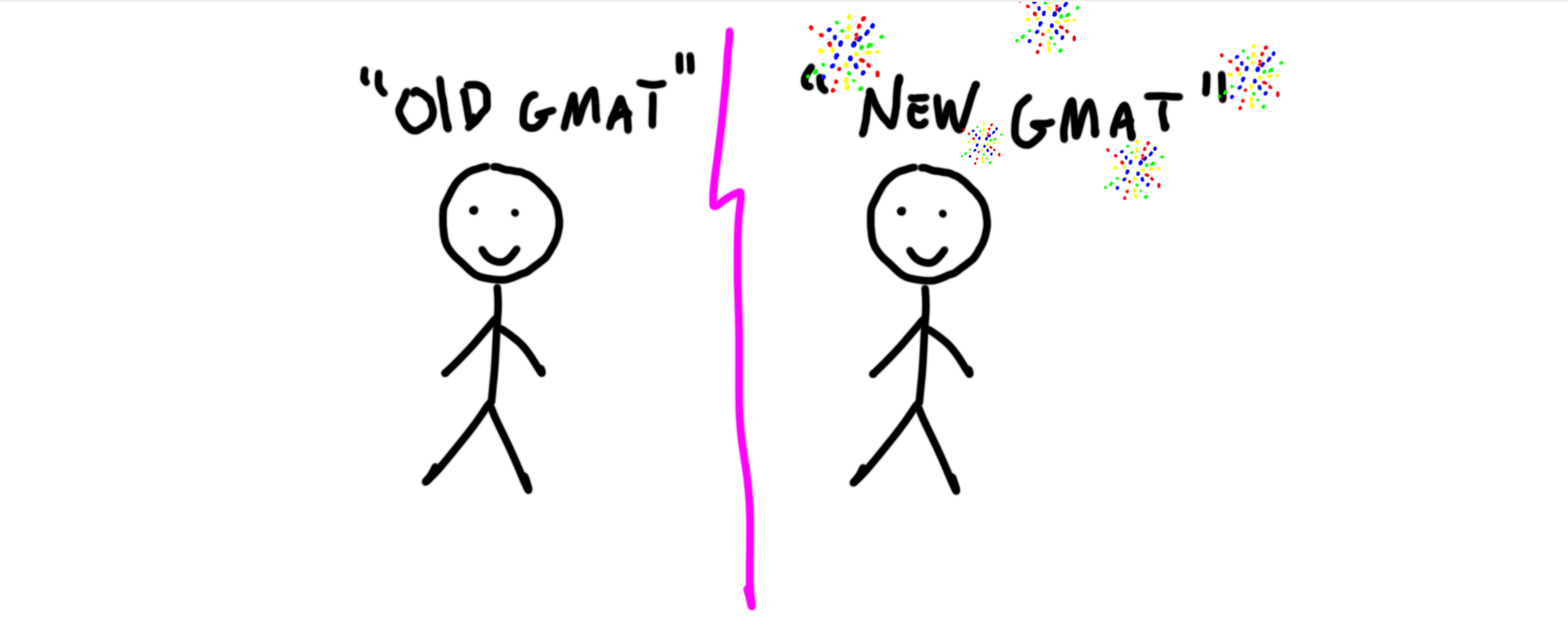How to switch to the New GMAT?
Good news: there isn’t much (if any) new content to learn in order to switch from the old GMAT to the new GMAT (formerly called GMAT Focus) which is essentially a subset of the old exam. The difference between old and new is most apparent in what is missing from new iteration (sentence correction and geometry), in the format, and in the scoring, which now heavily features Integrated Reasoning.
Although there is no new content to learn, even if you were 100% prepared for the GMAT classic, you may need to do some additional studying to sharpen up your Integrated Reasoning skills and to adjust to the slightly updated format which allows you to review questions and update three of them.
Integrated Reasoning Counts
After years of waiting in the wings, Integrated Reasoning is in the big game. If you have studied quant and verbal diligently then, from a content perspective, you are all set for IR. But it is important to get used to the format as most of the questions are organized differently than quant/verbal questions.
Because IR relies on quant and verbal skills and there is relatively little official IR practice, I would leave the IR studying for at least the second half of your preparation (once you have quant and verbal solid).
The timing and test strategy are a little different
You will need to adapt your timing strategy to the new section timings and formats. There are three main things to think about.
- The sections are shorter so you have less runway for time management.
- You can review once you complete a section so it makes even more sense to guess and move if you are stuck.
- There is a much bigger penalty for not finishing a section (it’s a disaster!) so it is critical to get an answer down for everything.
Section Order is worth thinking a bit about
The new GMAT is slightly section adaptive. Meaning, if you do well on the first section then the first question of the second section will be slightly more difficult than if you hadn’t done as well on the first section.
You might be thinking: why do I want a more difficult test??? Good question. The more difficult the questions the more potential you have for a higher score. Your score isn’t only based on how many questions you get right but how difficult those questions are. Bottom line: you want high difficulty.
With that in mind, there is a decent argument for starting with the section on which you score the best. That said, start where you are comfortable as the section adaptivity is slight and your mental game is far more important.
Ready for GMAT Classic = Almost ready for the new GMAT
If you have already put a ton of time in preparation for classic GMAT you will still need to put in some effort to adapt to the new Edition but don’t let that stop you as you are most of the way to being ready for the new test.
Also, if you are concerned that you will score lower on the new test, keep in mind that it is your best score that matters (you select what scores to send to MBA programs) and that retakes don’t count against you.
Good luck and follow up with any questions!
